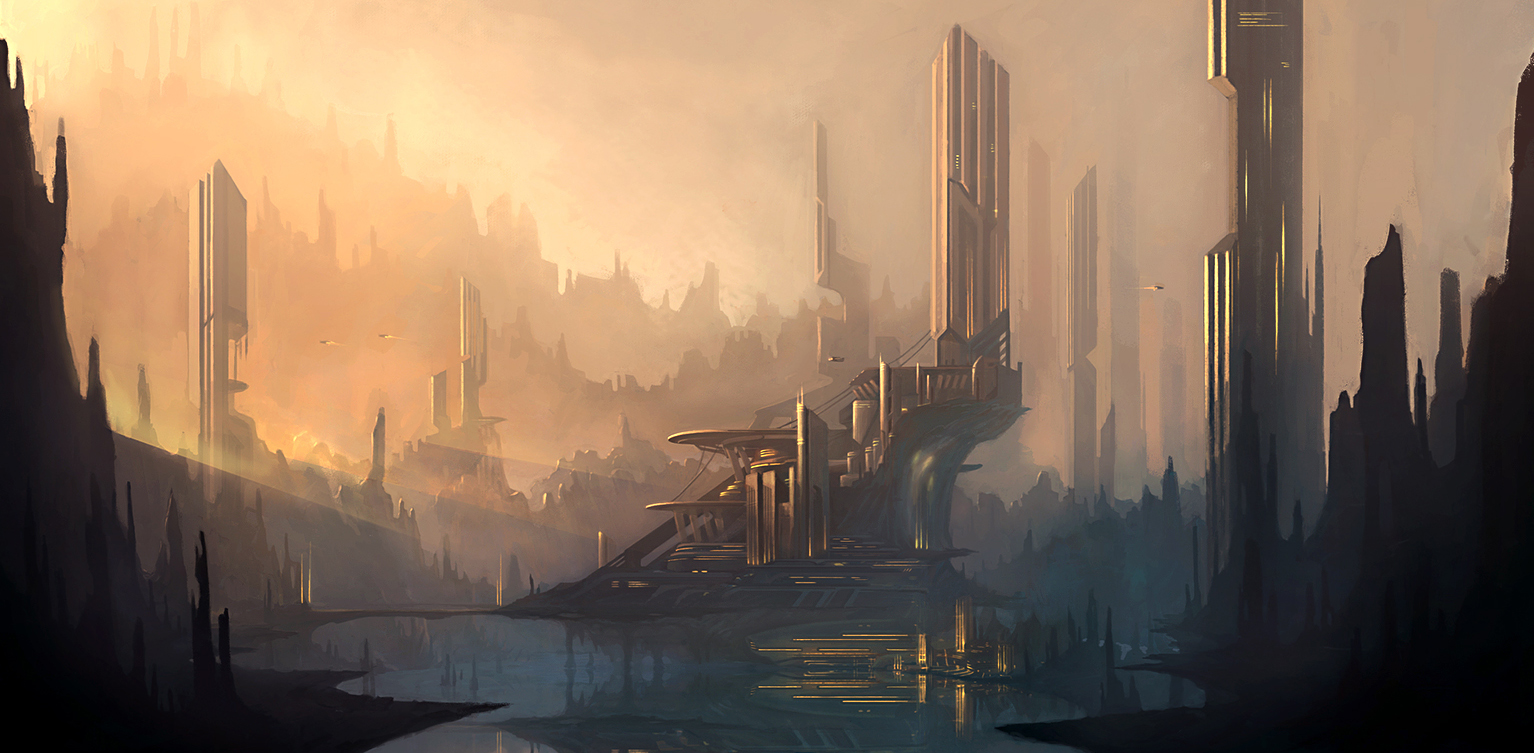Submit your best renderings for the Unbuilt Categories at the 7th Annual A+Awards for a chance at global recognition and international publication! Click here to prepare your entry before the final entry deadline on March 29th.
Belgian architect Vincent Callebaut’s futuristic urban landscapes are not to everyone’s liking, but one thing is for sure: They always get the internet talking. Some of his most provocative renderings portray Paris as an über green metropolis, populated with vertical farms, towers powered by photosynthesis and apartments made up of tessellating honeycomb modules, fused with traditional residential blocks.
Inhabitable bridges soar across the Seine, whilst tree-like structures entwined with mangrove plants spiral overhead. Weaving between the luscious high-rises, a spiderweb of monorails completes Callebaut’s outrageously utopian vision of sustainable architecture and infrastructure.


© Vincent Callebaut Architectures. Via designboom
Callebaut’s fantastical work is intended to get people talking about environmental issues within the built environment, and on this point alone, his renderings must be considered a huge success. His work follows in the footsteps of many architects who delight in the creation of playfully absurd worlds, intended not as feasible proposals but rather to provoke debate and encourage us to ask: “What if?”
This is the beauty of conceptual architecture — and why the Architecture + Models & Rendering and Unbuilt Categories are among the mostly hotly contested in Architizer’s A+Awards, the world’s largest awards program for architecture and building-products. As you consider which of your renderings to submit for one of architecture’s most prestigious honors, take inspiration from the following “dreamscapes”, each of which push through the boundaries of reality and explore the potential of architecture to transform the future …

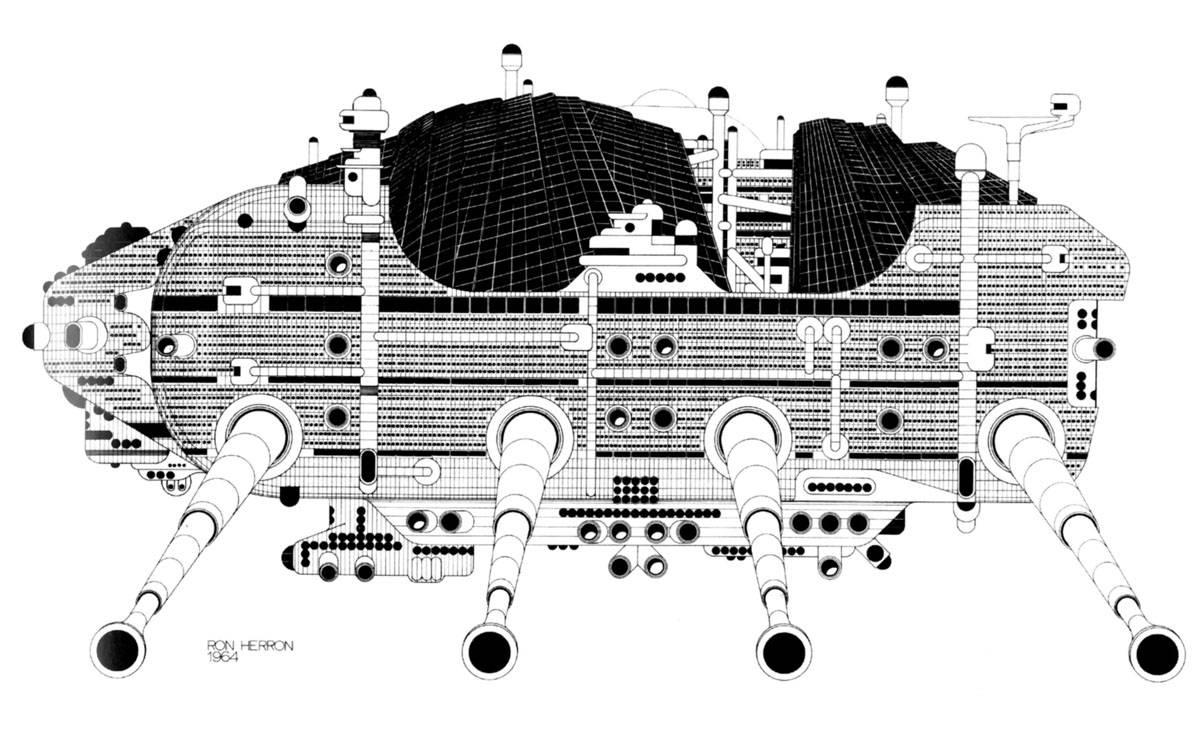
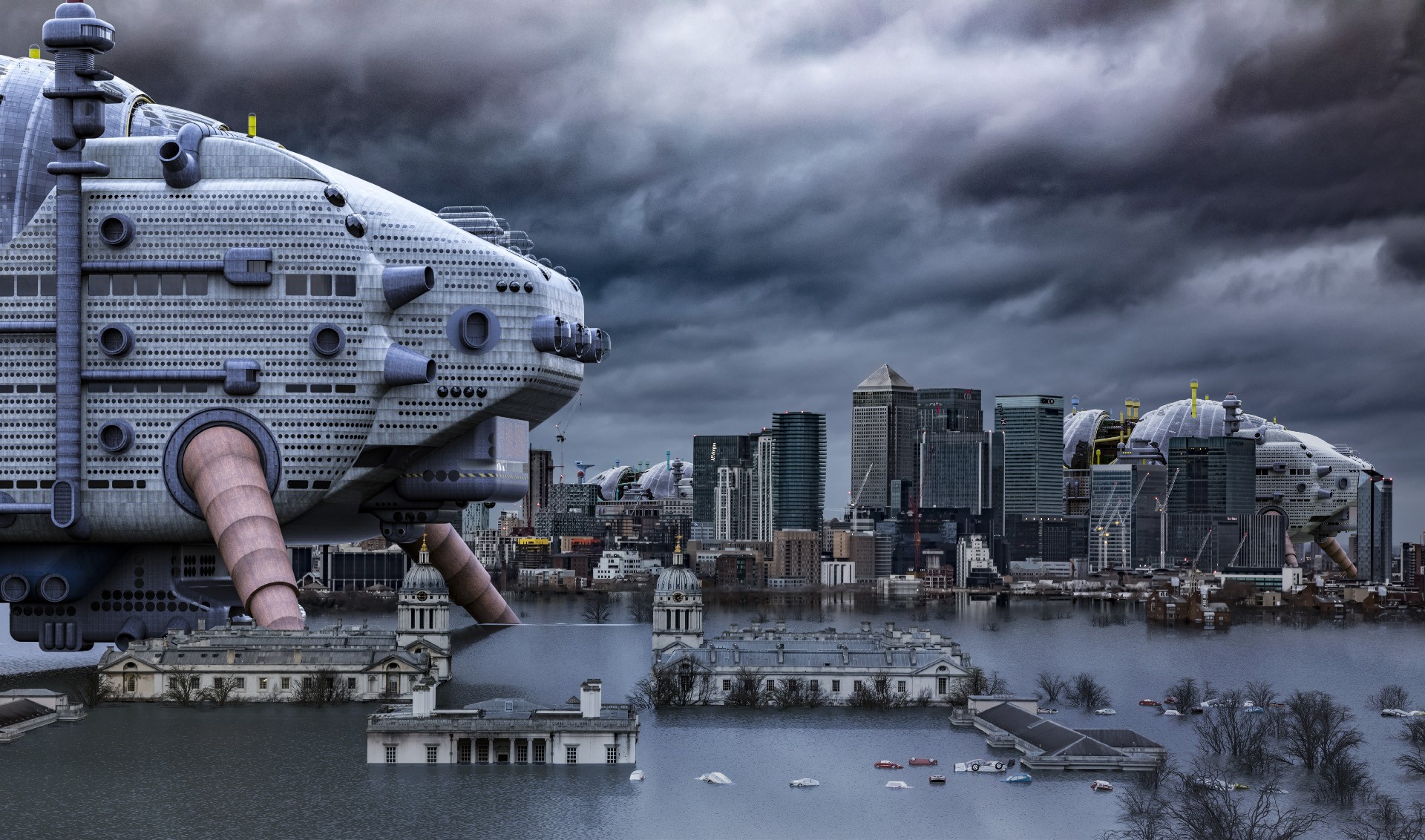
Via Archipress and Atkinson and Co
Walking City by Archigram
In an article for Archigram, the trailblazer of conceptual architecture, British architect Ron Herron proposed gargantuan, nomadic cities that could relocate as needed to access vital resources and provide infrastructure for manufacturing around the world, wherever demand arose. Drawn in 1964, it caused quite a stir in the world of architectural criticism and urban theory.
These robotic structures could link together to form an enormous metropolis when necessary, or break down into individual, free-moving buildings, bridges, and road segments. Outlandish though it may be, the project harnessed the same principles of versatility and dynamism present in metabolic architecture, which was to become a reality in Japan during the same period.
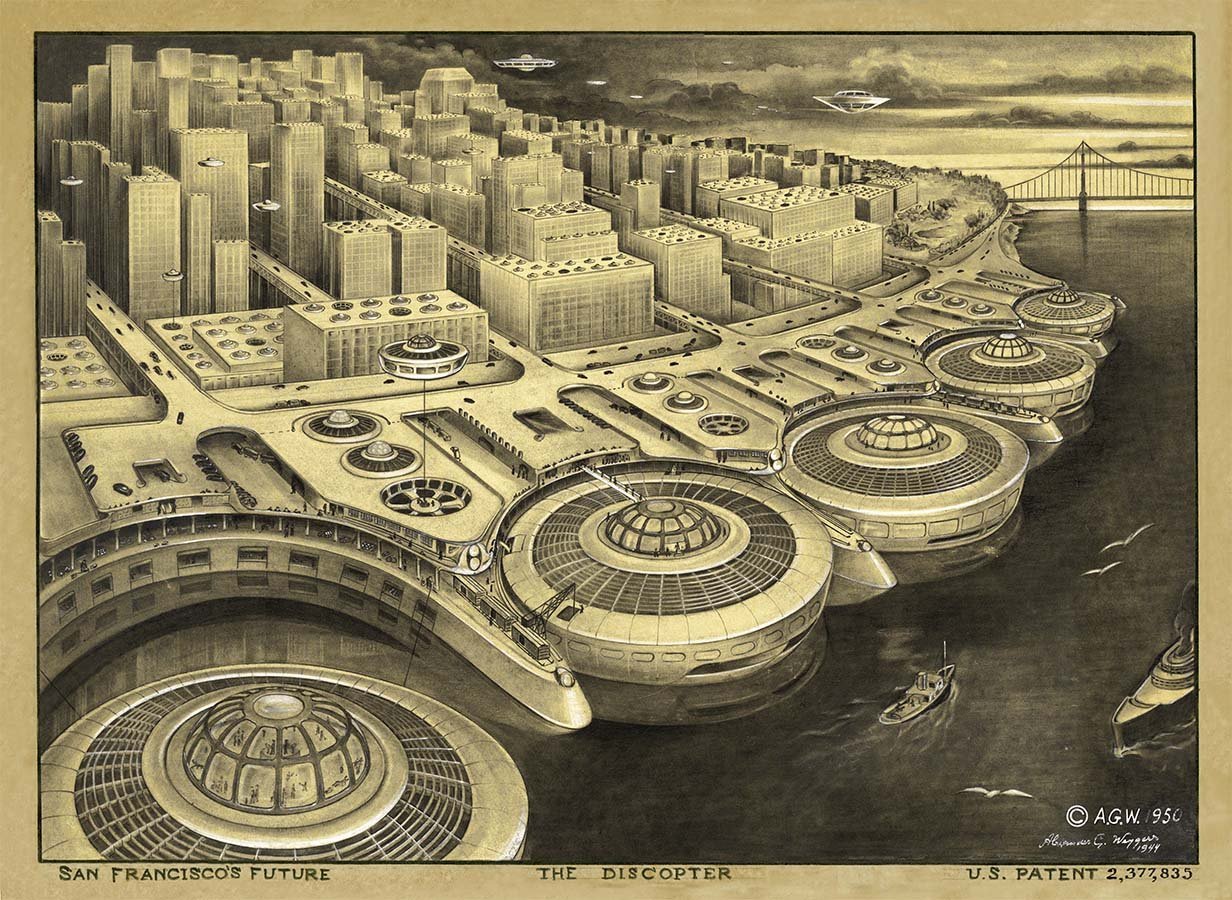
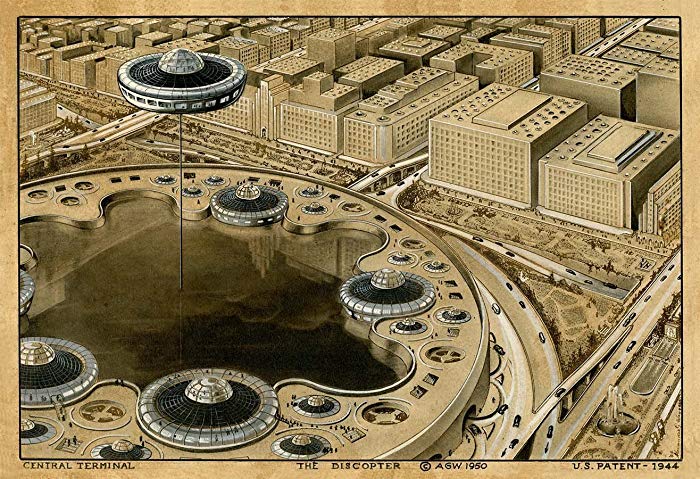
Via Fineart
Discopter City by Alexander Weygers
A Dutch-American polymath with experience in aerospace engineering, Weygers received his patent in 1945 for a disc-shaped craft, two years before the term “flying saucer” was ever used. The Discopter was born.
The visionary artist and painter put together a compelling image of a future San Francisco, with the city’s infrastructure redefined by this new mode of transport. Although the Discopter still looks like something out of The Fifth Element, Weyger’s illustration provides an intriguing glimpse of just how a future metropolis could be shaped by advances in technology.

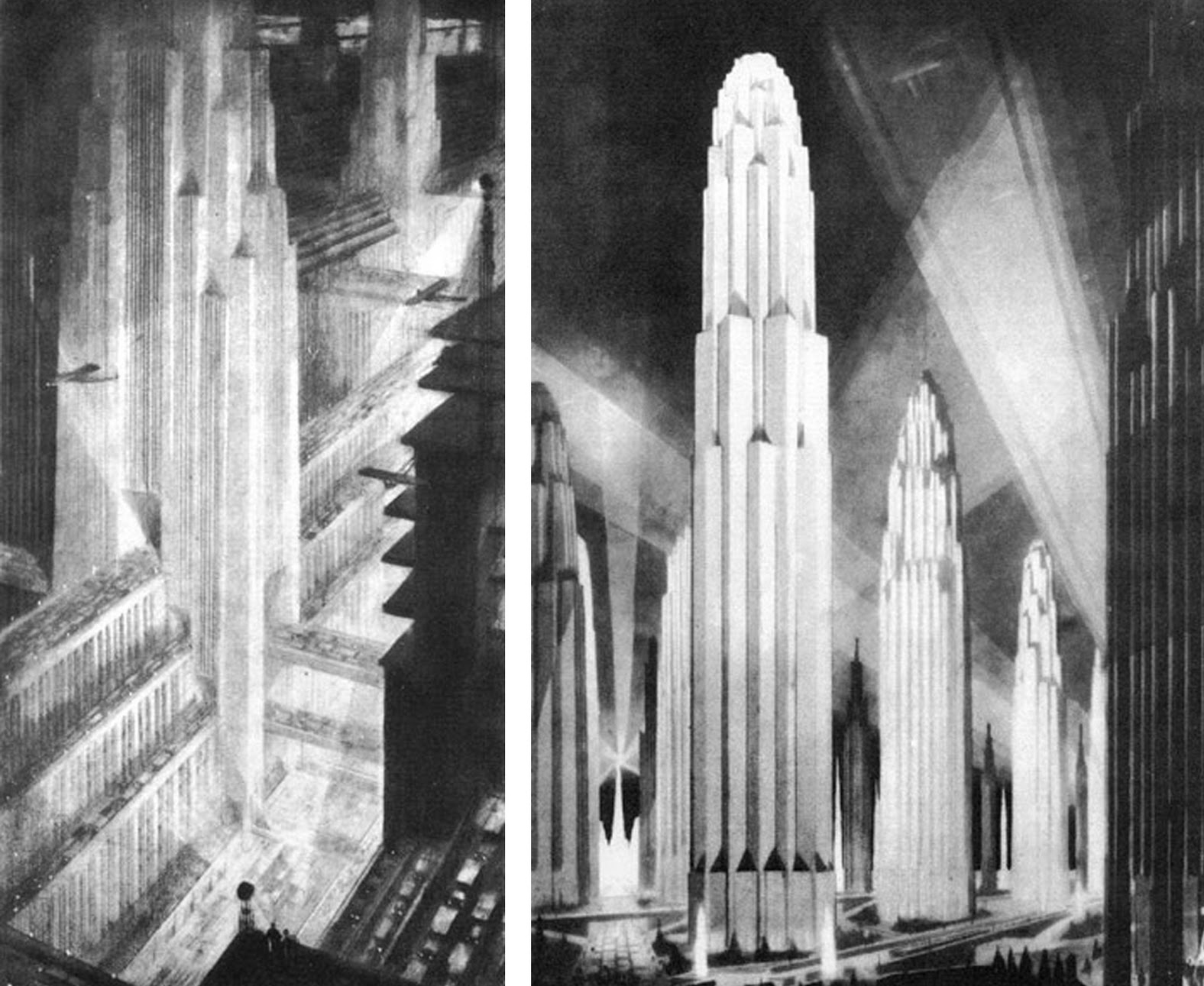
Via Diesel Punks and Graphicine
Manhattan by Hugh Ferriss
Perhaps the most famous architectural concept artist of them all, Hugh Ferriss illustrated the consequences of zoning laws in New York City to show professionals the exact setbacks necessary to maximize floor space during the skyscraper boom of the 1920s. His drawings pre-empted the iconic silhouettes of Manhattan classics, the Empire State and the Chrysler Building.
At the end of his book “The Metropolis of Tomorrow,” he included a series of hypothetical views, presenting Manhattan as a manmade mountain range: The forest of towers has inspired countless modernists and futurists, and gave a glimpse of an urban landscape that is still emerging today.

Via André Rocha
Transparent City by André Rocha
Portuguese illustrator André Rocha uses fine pen work to create whimsical urban environments with incredible density — and an extraordinary level of detail. The artist’s scenes “vacillate between the real and the surreal,” playing with texture, light, and shade to create riotous cityscapes that sit precariously on the page.
Rocha enjoys contrasting traditional architectural styles with modernist concepts of openness and minimalism, and “Transparent City” sees that contrast displayed in all its glory. Perhaps it represents a metaphor for ancient cities that are beginning to be punctuated by bold, contemporary interventions.

Via Artstation
Futuristic Slums by Jean-Guilhem Bargues
Whilst this dystopian environment was produced by Bargues for purely artistic purposes, it is eerily reminiscent of certain real-life urban conditions — namely Venezuela’s Torre David, which was the world’s largest vertical slum until a mass eviction on New Year’s Eve 2014.
Bargues’ rendering is strangely beautiful nonetheless, and the inclusion of two figures in the foreground gives an indicator of this makeshift city’s epic scale. There is also a nod towards Orwellian concepts of surveillance and the nanny state: who is piloting those aircraft, their spotlights beaming down through the smog-filled sky?

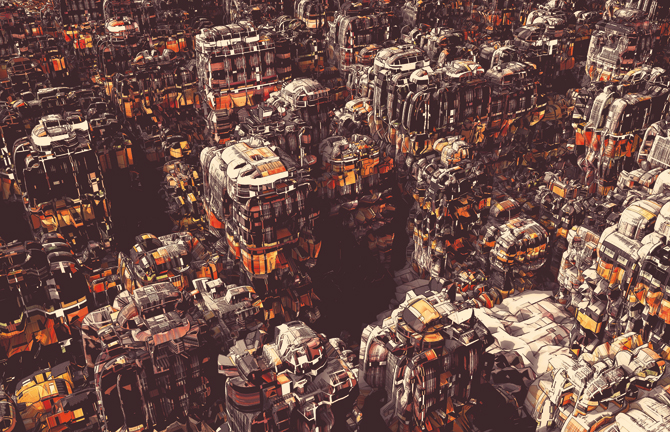
Cities by Atelier Olschinsky
Peter Olschinsky and Verena Weiss met whilst working on a project for a mutual client in 2002, and instantly realized that they must work with each other on a more permanent basis. Atelier Olschinsky was born, and with it has come an extraordinary array of intense graphic artworks with a mind-boggling level of spatial intricacy.
Hi Fructose arts writer James Scarborough sums up the chaos beautifully:
“Each piece offers panoplies of virtuosity. Each bristles with complexity and detail. The series resembles Russian Constructivism on steroids. It’s rife with formal movement. Line and pattern crisscross and overlay. It’s more a Platonic idea of a major metropolis, what sleepy villages dream of becoming when they grow up.”

City of the Future by Kempster and Evans
Illustrators Kempster and Evans created this highly graphic vision of the future in 1954, which appears to have been heavily influenced by the modernist principles of Le Corbusier. The illustration appeared in James Fisher’s book “The Wonderful World,” and envisioned cities linked together with an extensive network of public transport, much like Vincent Callebaut’s plan for Paris.
The prediction of a transport-dominated urban condition is a common vision within utopian proposals, and the image produced by Kempster and Evans echoes another ‘City of the Future’ put forward by W.H. Corbett (his incredible drawing can be found right here).
Now it’s your turn: Submit your visualizations in the Models & Rendering and Unbuilt Categories for the 7th Annual A+Awards, and do it today — the final entry deadline on March 29th!
Top image: City of the Future by Tim Van T’ Hof
